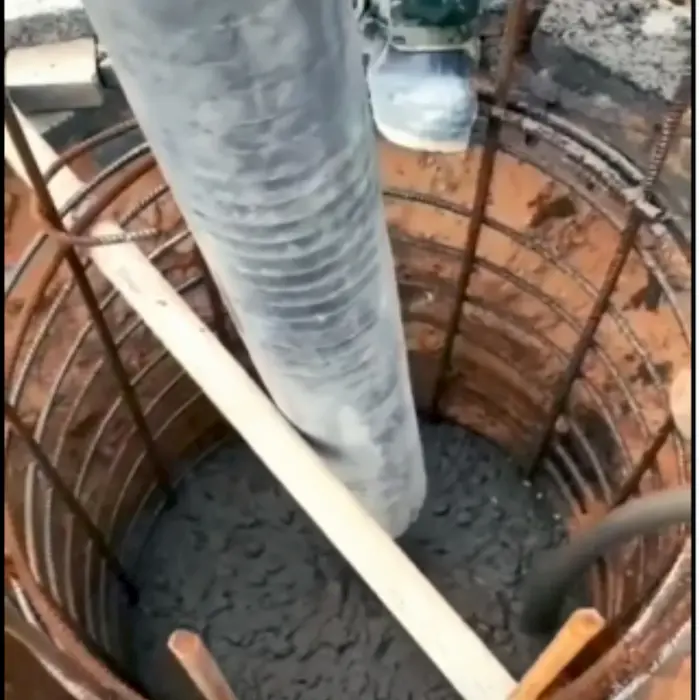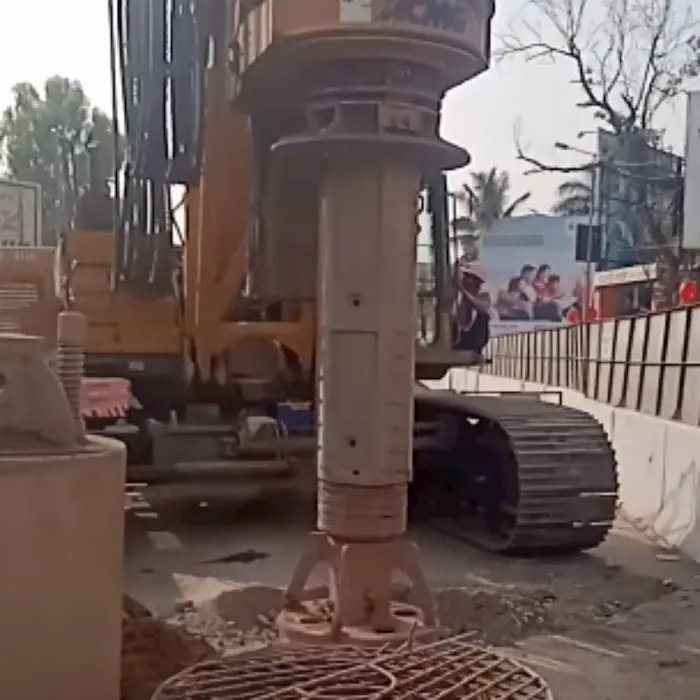The foundation of any engineering project is one of the most important components that determine the strength and stability of the structure. It is important to note that foundations serve as a medium for transferring load from the superstructure to the underlying ground.
There are two types of foundations that are commonly used in construction: shallow foundations and deep foundations. The End Bearing Pile is an example of a deep foundation, which has been discussed briefly below. Today, we are going to share everything you need to know about end-bearing piles.
As a starting point, let’s take a look at the end bearing pile definition in more detail.
What is End Bearing Pile: An Overview

End-bearing piles are formed on the basis of a mechanism for transferring loads through the bottom tip of the pile.
The end-bearing pile, also known as the point-bearing pile, is an important part of the foundation.
End-bearing piles are driven into the ground such that their bottom ends rest in the intermediate layer between the weak and strong soil layers.
Because of this, end-bearing piles develop most of their bearing capacity at the bottom tip. As a result, the end-bearing piles act as a column that transfers the load that comes from the superstructure to the subsoil below.
This pile’s bearing capacity can be easily determined by multiplying the area of the bottom tip of the pile by the bearing capacity at that particular depth of soil.
As a result, the diameter of the pile can be determined by considering a certain safety factor.
What Are End-Bearing Piles Made Of?
The end-bearing piles can be made of wood, concrete, or steel.
Wood piles were traditionally used to support a building on weak soil. Venetian buildings are famous for being built on wooden piles over the sea. Today, wood piles are used to build jetties. It should be noted; however, the pile length depends on the size of the tree from which the wood was cut.
Steel and concrete end-bearing piles can also be prefabricated, meaning that they are created in advance and transported to the construction site as opposed to being cast on the spot. A concrete pile and a steel pile can both support heavy loads. When the soil is corrosive, concrete pilings work best.
Many reasons make steel end-bearing piles popular. Steel pilings can be tailored to meet exact load specifications, reducing costs. Due to the ease of building steel piles and the ease of replacing them after construction is complete, they are relatively inexpensive to maintain and replace.
The steel end-bearing pile is a great choice for large structures such as buildings and bridges that require a deep foundation.
Construction of End Bearing Pile
- In an end bearing pile, the load-carrying capacity is determined by the resistance of the hard soil layer at its end. There are three types of strong strata that can be used as the foundation for end bearing piles, sand, rock, and gravel.
- The end of an end bearing pile is penetrated into the strong stratum three times its diameter. As a result of this calculated depth, the hard stratum lying at the pile’s end is proven to be of maximum ultimate strength.
- To construct an end bearing pile, you can use a prefabricated pile or an auger pile.
- The end bearing pile passes through loose soil before being placed on a hard layer, which acts like a column. Therefore, end bearing piles are generally designed similarly to reinforced concrete columns.
Uses of End Bearing Piles

Generally, pile foundations are recommended to be used in the following situations:
- When the surface soil layer is weak and cannot withstand the weight of the structure and settles excessively.
- When it is necessary to construct a structure with heavy concentrated loads, such as high-rise buildings, water tanks, or bridges.
- When the groundwater table is pretty high.
- When construction has to be done on a riverbed, riverside, or seashore, where scouring could happen.
- Whenever it’s not feasible or expensive to use another type of foundation.
- If the construction site is located near a canal system or deep drainage structure.
Now let’s know the advantages and disadvantages of end bearing piles.
Advantages of End Bearing Piles
In comparison to other types of piling, such as friction piles and floating piles, end bearing piles have a number of advantages. Let’s take a look at them:
- Compared with other types of piles, such as floating piles, it experiences a very low settlement level. In fact, this type of pile is what is used most often in the construction of multi-story buildings.
- In the majority of construction sites, end bearing piles are used as a foundation.
- It is possible to precast end bearing pile construction to meet specific requirements.
- In addition to being able to prefabricate to any length, shape, and size, they can also be used on-site, reducing the completion time of projects.
- The end bearing pile is not prone to buckling failure in weak soil unless it passes through air or water.
- When a maximum design load applies, the pile can rest on a firm stratum that may be stronger than steel.
- It is possible to optimize the cost of pile construction by specifying the length of the pile based on the depth of the firm soil layer.
- It is easy to determine the length of the pile to be used based on the bedrock depth obtained from soil exploration boreholes.
Disadvantages of End Bearing Piles
There are two main disadvantages associated with end bearing piles:
- It is necessary to use heavy equipment in order to install end bearing piles. This also means that workers must be specialized to install the piles, which increases costs.
- In addition to high friction around the pile, the soil around the pile may stick to it, reducing its effectiveness.
Applications of End-Bearing Piles
In general, end-bearing pile foundations can be applied to the following major areas:
1. High-Rise Buildings and Towers:
For the construction of high-rise buildings and towers, the use of an end bearing pile foundation is highly desirable.
These piles are effective even if settlement is excessive on the construction site.
2. Water Tanks and Reservoirs:
For the construction of water tanks and reservoirs, end bearing piles are highly suitable.
3. Bridges:
In the construction of bridges, end bearing piles are used since they can support very high loads.
Let’s take a look at the pile capacity for end bearing piles in this section.
Determination of Bearing Capacity of End Bearing Piles
1. Schmertmann Method
In his theory of end-bearing piles, Schmertmann proposed a method for the determination of the bearing capacity of end-bearing piles.
This method calculates the unit end bearing capacity of the pile based on the cone tip resistance using the following equation:
qt = (qc1 + qc2 ) / 2
Iqc1= The minimum average cone resistance of the zone ranging from 0.7D to 4D below the pile tip.
qc2= the average of the minimum cone tip resistance over a distance of 8D above the pile tip.
D = Depth of the end-bearing pile.
2. Tumay and Fakhroo Method
Typically, this method is used in order to determine the ultimate pile capacity of end-bearing piles, especially when they are located in clayey soils.
The equation for determining the value is as follows:
qt = ( qc1 + qc2 ) /4 +( qa /2 )
qc1 = The average of the qc values at 4D below the pile tip.
qc2 = The average of the qc minimum values below the pile’s tip at 4D.
qa = The average of the qc minimum values at 8D above the pile tip.
Effective Length for End Bearing Pile
The effective length of the end bearing piles should not exceed 20 m, and they should be of geo category 2. If the pile length is between 20 – 30 meters, then the bearing capacity should be reduced by 10 – 25%.
Final Verdict
This is overall about end bearing pile. It is my hope that this article has given you a basic understanding of end bearing piles. They are, however, more resistant to settlement than other types of piles, such as floating piles. It is for this reason that end bearing piles are highly desirable for the foundation of a multi-story building.
Frequently Asked Questions
How short can an end-bearing pile be?
In order to determine this, one needs to know the depth at which the hard soil stratum is located.
How to fix the length of end bearing pile in bridges?
Based on the load calculation and the depth of the hard soil strata, the length of the end bearing pile can be fixed.
Where to use the end bearing pile?
This type of pile is most commonly used in the construction of high-rise buildings, towers, dams, and reservoirs, as well as bridges with end bearing piles.
